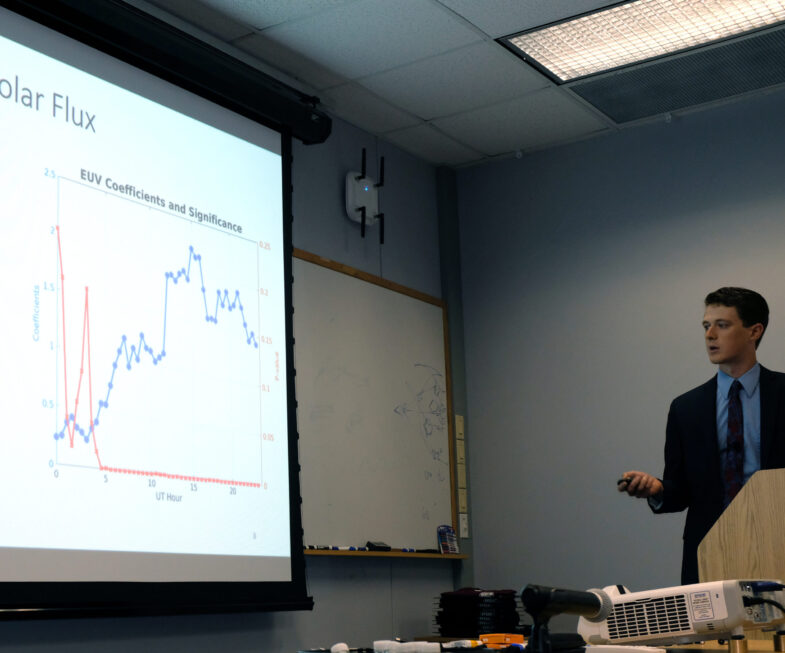
Former REU student co-authors research in Journal of Geophysical Research
Cole Tamburri, now a graduate student in the Department of Astrophysical and Planetary Sciences at the University of Colorado–Boulder, has co-authored with Haystack’s Larisa Goncharenko and others a study about a new model for total electron content (TEC) in the Earth’s ionosphere. Tamburri was an intern in the Research Experiences for Undergraduates (REU) summer internship program at Haystack in 2019. His research with Goncharenko was extended past the summer of 2019 and became part of his senior thesis at Boston College in the spring of 2020.
The article is entitled “A new model for ionospheric total electron content: the impact of solar flux proxies and indices,” and is available at https://doi-org.ezproxy.canberra.edu.au/10.1029/2020JA028466. Goncharenko, Tamburri, et al. introduces a new model for TEC in the ionosphere and includes comprehensive examination of the impact of several solar flux proxies in order to find the best one for TEC. Solar flux is a measurement of the energy put out by the sun, and solar flux proxies are convenient ways to describe solar energy at a specific range of wavelengths.
‘Throughout many years of mentoring REU students I have met many exceptionally bright young people who rapidly became well-recognized professionals in their chosen fields,” said Goncharenko. “Even amongst this highly talented group, Cole really stood out—his ambition, work ethic, and dedication to the project were simply unprecedented. He not only ran 136 (!) tests of the model to check every little aspect that we could think of, but he did it with true ingenuity, enthusiasm, and a bright smile. We are currently working on another study. One of the joys of our work is to see a new generation of scientists and engineers when they are still very young, and to help them to make their own decisions about their future—and then, years later, to find out about incredible things that they do.”
Tamburri has been recognized with awards at the American Geophysical Union (AGU) Fall Meeting in 2019 and the American Meteorological Society 2020 meeting, demonstrating not only the high-quality scholarship of his research but the extent to which the REU program promotes research by talented undergraduates.
When asked about the Haystack REU program and his recent publication, Tamburri said, “I feel incredibly grateful to have been given the opportunity to work on this project over the last couple years. Since the REU program in 2019, through several conference experiences, and finally with the publishing of a paper, the scientists and staff at Haystack (in particular, Dr. Goncharenko, who has been a patient and valued mentor in both science and life) have been tremendously supportive of my work as an early career scientist. I can say without hesitation that the science of which I was part, the lessons I have learned, and especially the people I have met since the beginning of my time at Haystack have provided the ideal beginning to a lifetime of contribution to the space sciences.”
Applications are now being accepted for the Haystack summer 2021 internship program, with an application deadline of February 1. All undergraduates interested in STEM careers and hands-on research are encouraged to apply.
Projects in 2021 will include black hole imaging with the Event Horizon Telescope, study of the Earth’s aurora via CubeSat, Antarctic glaciology, and measuring meteors with a radar network, along with many others.
The full project list and application is available at: